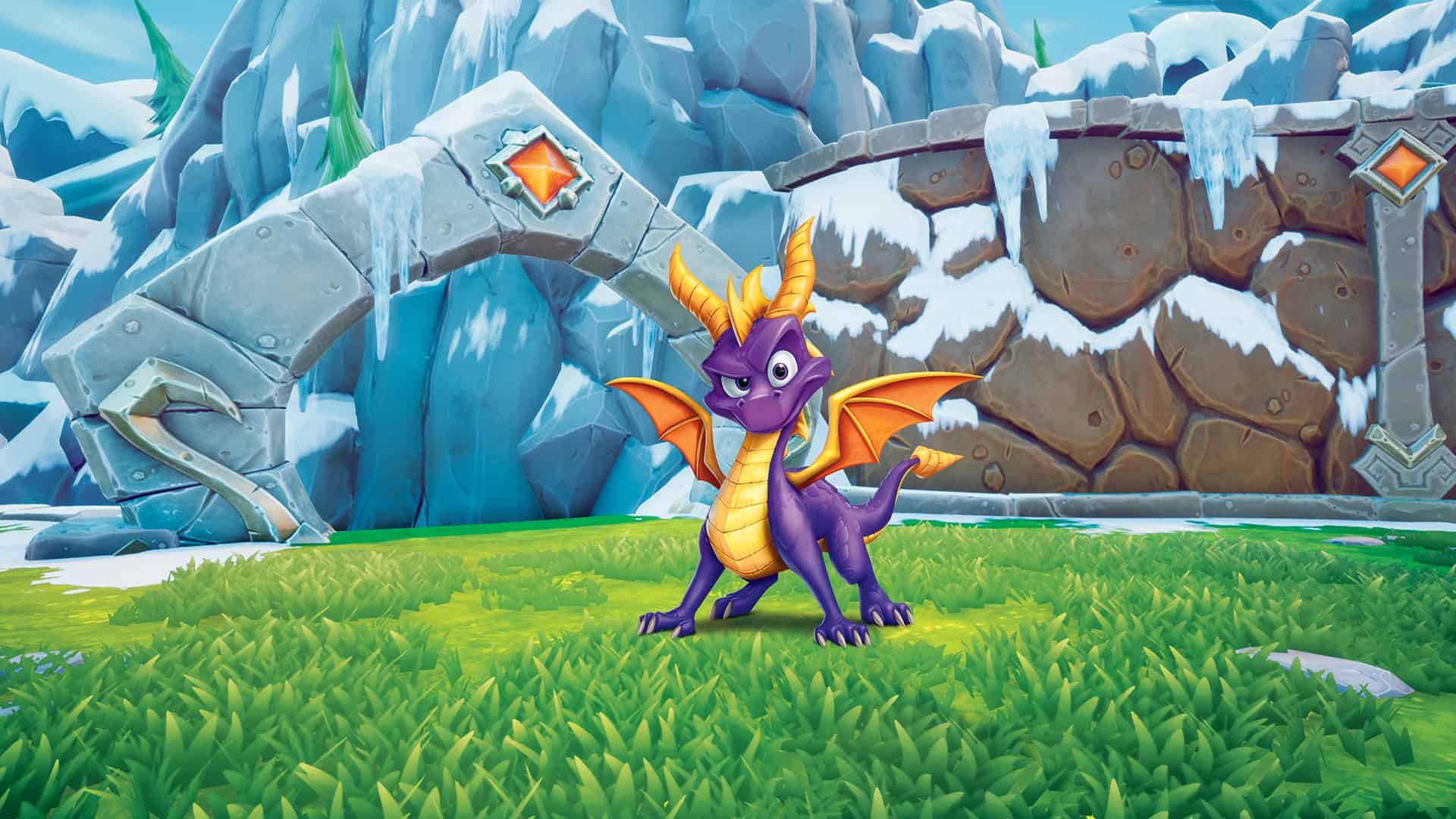As one of the original PlayStation mascots, Spyro has had a long history dating back to the late ’90s. The purple dragon was originally created and developed by Insomniac but has had multiple developers work on the franchise. Regardless, the original trilogy is seen by many as the peak of platforming games. The series has sold over 20 million copies worldwide and is one of the best-selling PlayStation games in history. Today, we will break down each game in this iconic franchise and see how it evolved over time.
Spyro the Dragon (1998)
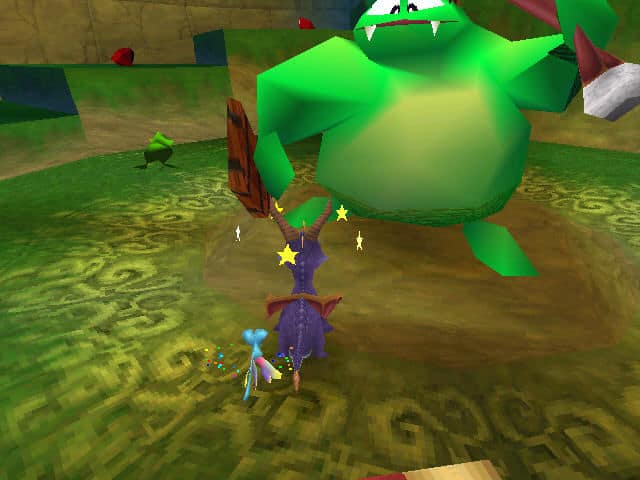
©IGDB – License
The first game in the franchise, Spyro the Dragon, introduces players to the game’s iconic characters, Sparx and Spyro. Players follow Spyro as he journeys to defeat Gnasty Gnorc, who has taken control of the Dragon Kingdom. After kidnapping dragons from around the world, it’s up to Spyro to save them, ending Gnorc’s reign.
The gameplay is similar to platformers around the same time, like Banjo-Kazooie. Players use Spyro to explore large open areas, collecting eggs, gems, and crystal dragons. Spyro also has multiple abilities, like breathing fire, head-butts, and gliding, allowing a unique way to explore and kill enemies. At release, the game received universal praise from critics and was nominated for multiple industry awards. It went on to sell over 5 million copies in its lifetime and helped spawn an entire series of games.
Spyro 2: Ripto’s Rage! (1999)
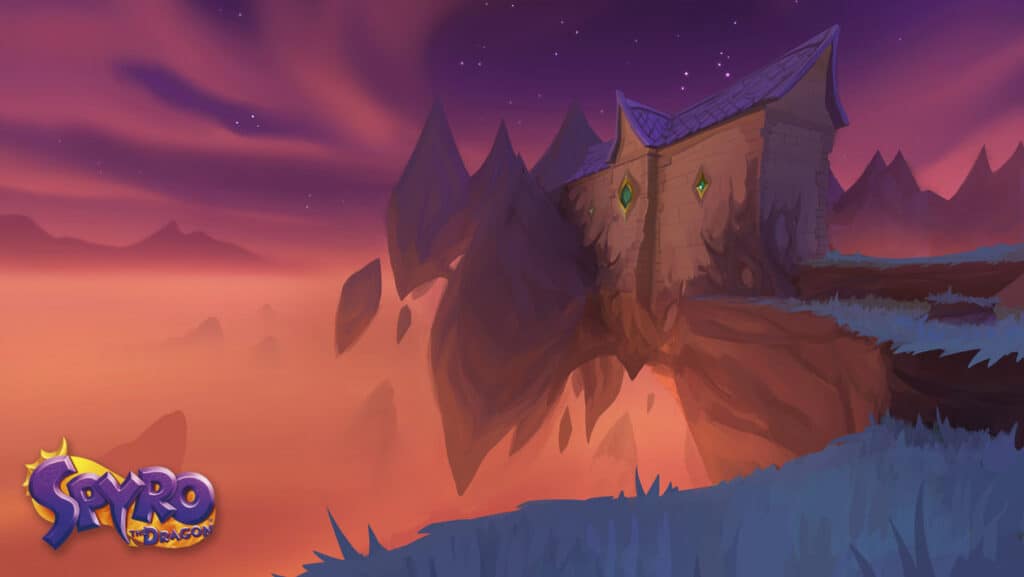
©IGDB – License
Following the release of its predecessor, Ripto’s Rage! was highly anticipated by both fans and critics. The production began immediately, with the developers wanting to keep the same fun energy of the original while offering more challenge. The game takes place a few years after Gnasty Gnorc was defeated, with Spyro and Sparx getting teleported to Glimmer. Glimmer is a realm being taken over by the warlock, Ripto, who seeks to get rid of all dragons.
The game follows the same formula of platforming, collecting items, and defeating enemies. It also introduces players to some key characters that reappear throughout the franchise. Hunter, Moneybags, and Ripto would all return in later titles, with Ripto being the most common villain in the series.
The reviews for the game were on par, if not better in some cases, than Spyro the Dragon. Some criticism arose for the overwhelming amount of collectibles and the difficulty being easier, despite what the devs said. The game sold over 3.5 million copies in eight years.
Spyro: Year of the Dragon (2000)
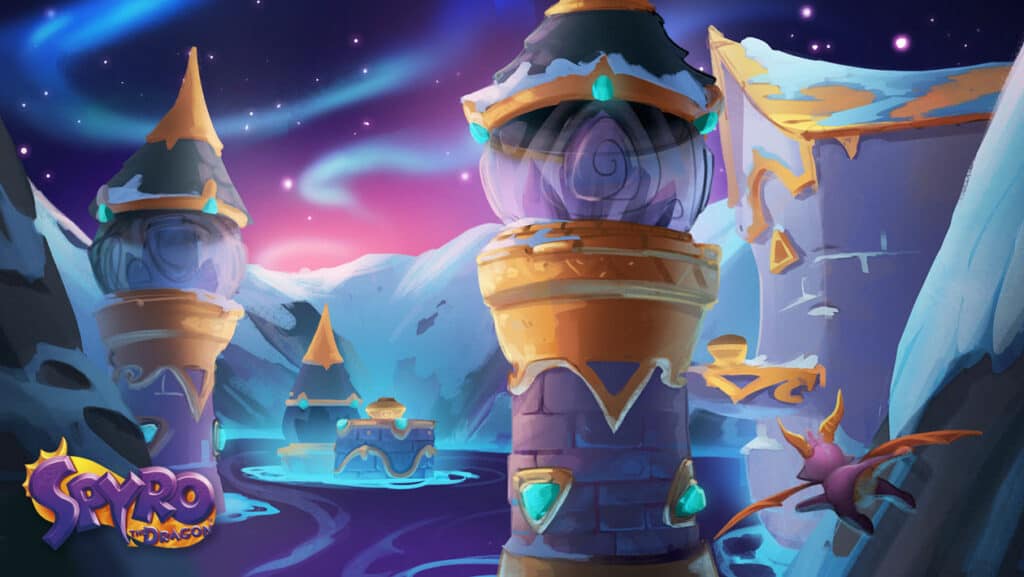
©IGDB – License
Finishing up the original trilogy, Year of the Dragon occurs during the Year of the Dragon event that takes place every twelve years. As the dragons celebrate the arrival of new eggs to the realm, the Sorceress sends her apprentice, Bianca, to steal the eggs. It’s up to Spyro, Sparx, and Hunter to travel the realm searching for the scattered eggs.
The game features all the abilities from the previous two games, including double jump, swimming, and climbing from Spyro 2. However, all of these abilities are available right from the start, allowing for more variety in level design.
Its release was followed by critical acclaim despite some reviewers claiming it lacked innovation. The game follows its predecessor’s footsteps but expands the gameplay and worlds. Its lifetime sales amounts to over 3 million copies after seven years. While fans cannot agree on which game in the trilogy is the best, it’s a testament to how good each game is.
Spyro: Season of Ice (2001)
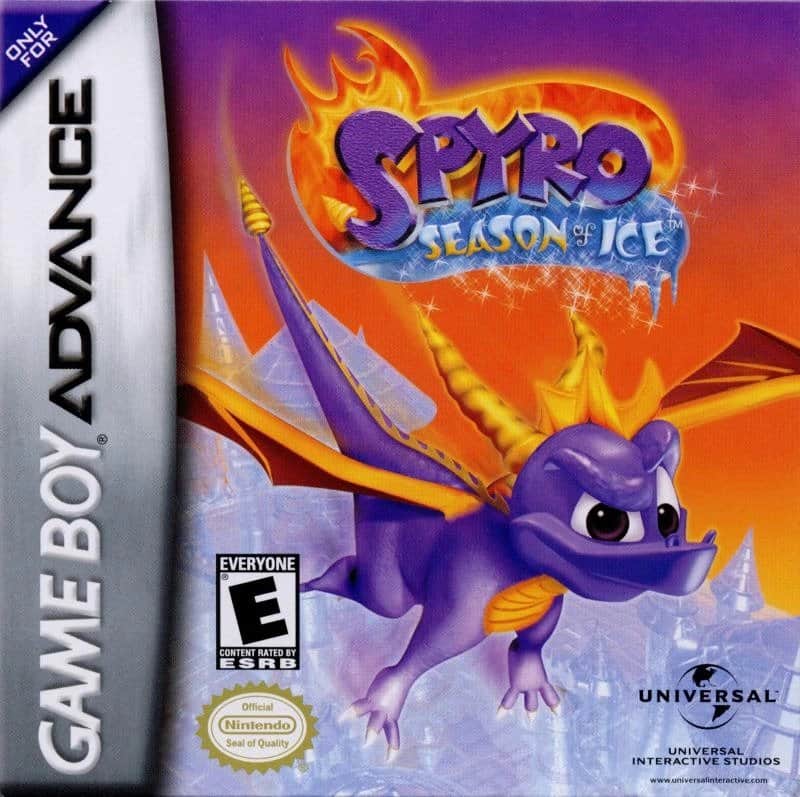
©GameBoy Advance game cover – License
Spy: Season of Ice is a Game Boy Advance sequel to Year of the Dragon that follows Spyro as he attempts to stop Grendor, who is kidnapping all the fairies. After trying to use Bianca’s magic book, Grendor is turned into a Rhynoc and plans to use the fairies to return to normal and stop his headache. The gameplay closely resembles the original PlayStation experience in a 2D isometric viewpoint. While the Game Boy Advance cannot handle 3D graphics, the developers captured the feeling of Spyro games.
It sold more than 1 million copies at release but received mixed reviews. While it allowed players to play Spyro on the go, the isometric view was confusing to look at. Players could hardly tell where platformers were or how far away they were. It was also the first game not to be developed by Insomniac, instead being developed by Digital Eclipse and published by Universal Interactive Studios.
Spyro 2: Season of Flame (2002)
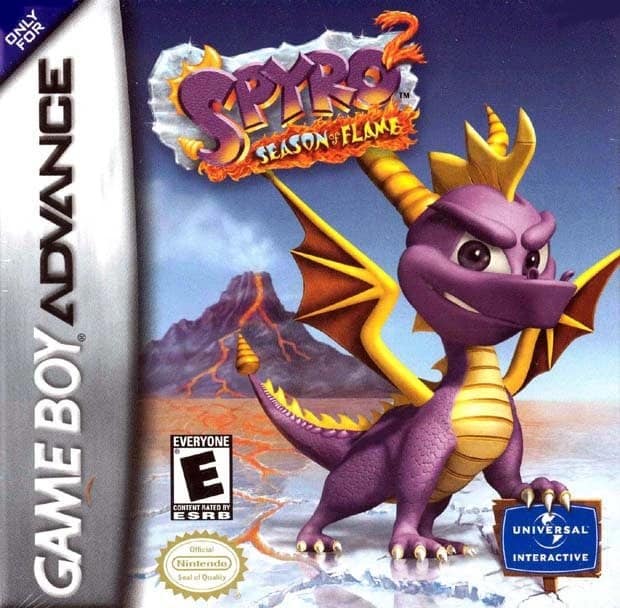
©GameBoy Advance game cover – License
Right after the events of Season of Ice, Season of Flame begins with Spyro returning home and discovering the fireflies are missing. After an army of Rhynocs swarmed the realm, they stole all of the fireflies under the command of Ripto. Due to the fireflies’ absence, dragons can no longer breathe fire, and the temperatures begin to plummet. It’s up to Spyro, Sparx, Bianca, and Hunter to stop Ripto before the Dragon Realm gets too cold, causing the dragons to migrate.
The game sold less than its predecessor, just over 500,000 copies in the United States, but received better reviews. While the isometric view was still confusing to some players, the distant platforms became more visible, and a map was added to help navigation. The devs also included better puzzles and graphics for a smoother presentation.
Spyro: Enter the Dragonfly (2002)
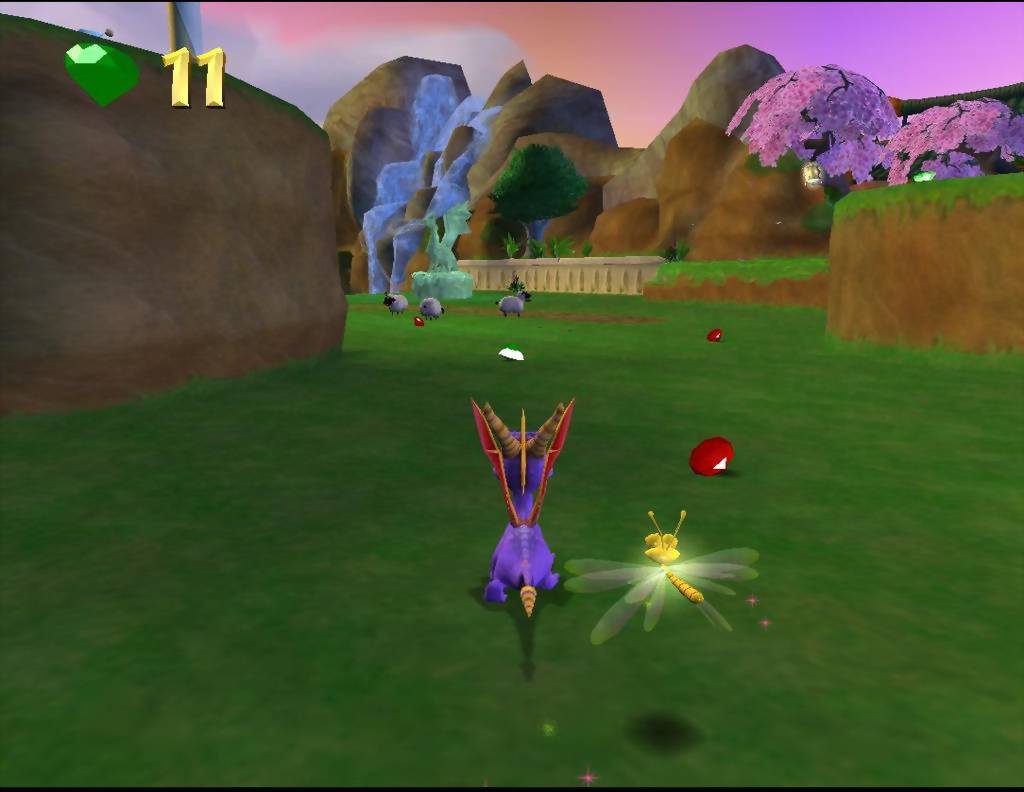
©IGDB – License
Enter the Dragonfly is the first console release two years after the original trilogy ended. The game was developed by Equinoxe Digital, the third studio to work on the franchise. It is seen as the fourth main entry in the series, with the Game Boy Advance games acting as more alternate titles or spin-offs.
The game follows Spyro as he takes on Ripto, who has once again captured all the dragonflies. The story begins with the eggs from Year of the Dragon hatching but not receiving their dragonflies due to Ripto crashing the event. New mechanics such as bubble, ice, and electric breath were added along with blocking attacks.
Expectations for the game were high because it was on a new generation of consoles, the PlayStation 2 and GameCube. The game was riddled with bugs, low framerate, glitches, and an uninspired story at release. Critics and fans bashed the title for its lack of innovation and being almost the same as the original trilogy. The performance was so bad that it received a nomination for the Worst Game on GameCube and a lawsuit after a child suffered seizures.
Spyro: Attack of the Rhynocs (2003)
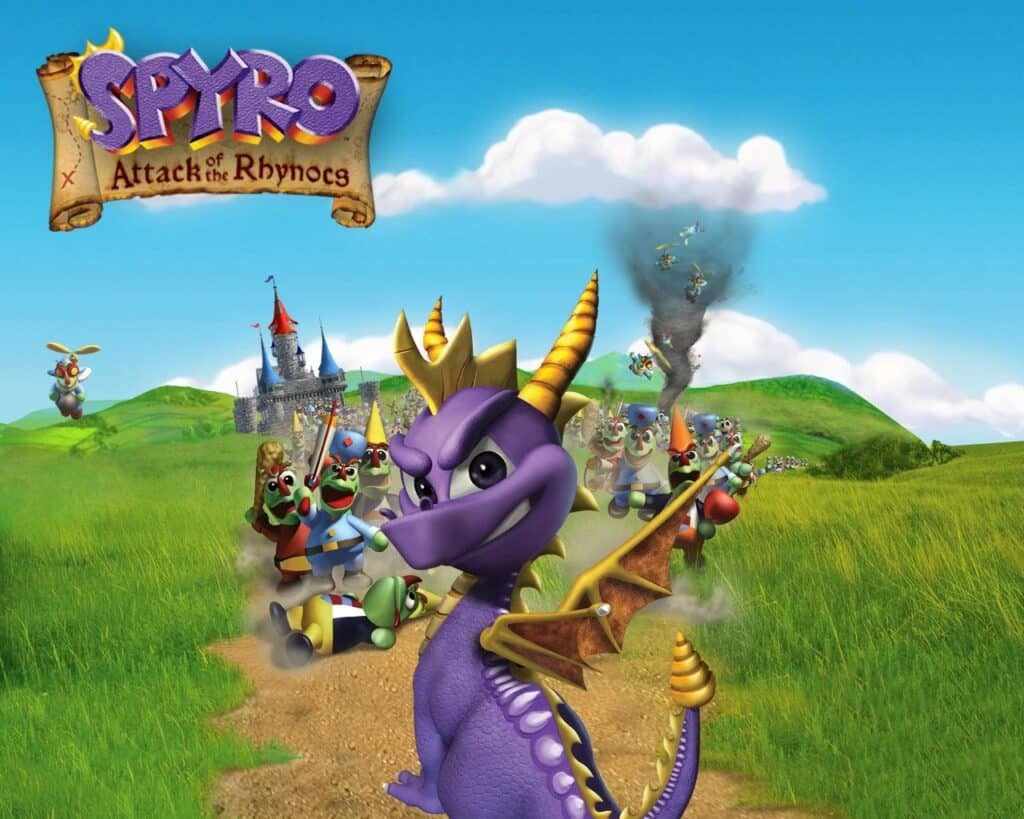
©Fandom – License
Returning to the Game Boy Advance, Attack of the Rhynocs completes the trilogy and is the final Spyro game developed by Digital Eclipse. Focusing on the criticism of the previous two games, the devs sought to change the gameplay but keep the original charm of Spyro.
While still centering around platforming and collecting items, the game focuses more on role-playing and expands the minigames. While not perfect, the isometric view was the best it could be, making it easier for fans to tell where they were going.
The game follows Spyro and the Professor, who accidentally open up a fabric in space and time, in which Ripto appears. After stealing a device from the Professor that allows time to travel to other lands freely, Ripto attempts to conquer the world. The game received average reviews but was seen as a big improvement over the previous two games. Fans acknowledge that it doesn’t play like the original trilogy but captures its essence while being its own game.
Spyro Orange: The Cortex Conspiracy (2004)
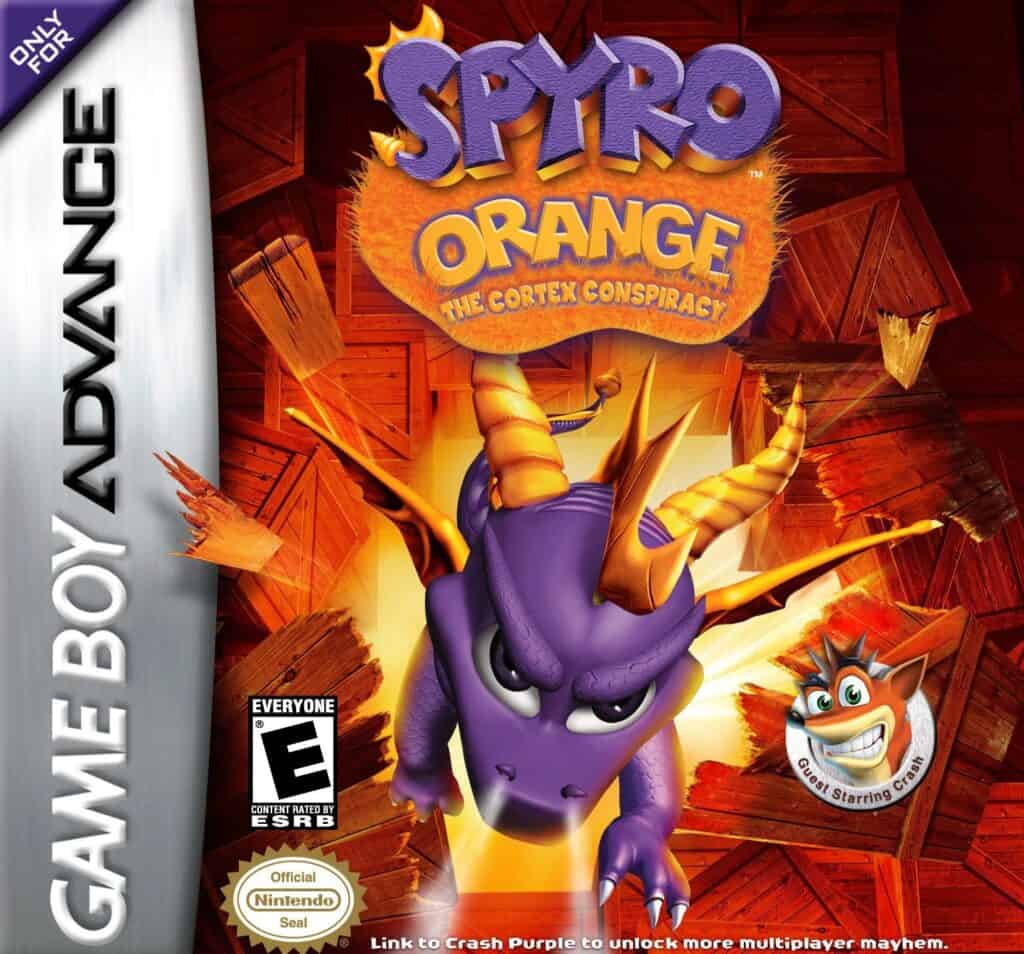
©GameBoy Advance game cover – License
The Cortex Conspiracy was released alongside Crash Bandicoot Purple: Ripto’s Rampage. The games are a crossover featuring Spyro, Crash Bandicoot, Ripto, Dr. Neo Cortex, and other iconic characters. Both games feature platforming elements but are largely a series of minigames the player must complete.
The storyline sees the formation of a team with both game’s antagonists, Ripto and Dr. Cortex, as they trick Spyro and Crash against each other. After discovering they have been tricked, they split up and travel to each other homeworlds to defeat the villainous duo.
Its reviews were average, with Ripto’s Revenge receiving slightly higher scores. Players complained about the overabundance of uninteresting minigames and gameplay’s “cheap” feeling. While the concept is interesting, the lack of Game Boy Advanced power led to the game’s downfall.
Spyro: A Hero’s Tail (2004)
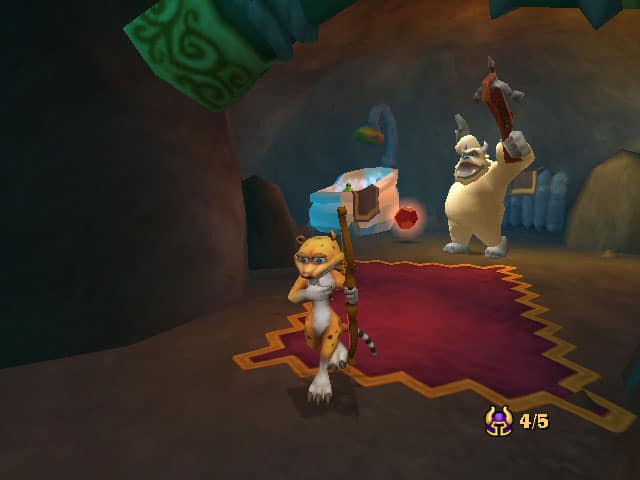
©IGDB – License
Returning to consoles once again, A Hero’s Tail is the first Spyro game to be released on Xbox. The game follows the defeat of Ripto from Enter the Dragonfly and features the return of Gnasty Gnorc. After being brought back to life, Gnorc and Red, an ancient dragon, use an army to plant Dark Gems around the realm. The Dark Gems take the light and goodness from the world, destroying and replacing them with evil.
Players travel to collect Dark Gems with the abilities introduced in the previous game. New mechanics like ledge grabbing, water breath, lasso attacks, and wall kicking were added. While the game didn’t capture the magic of the original trilogy, the reviewers were much better than Enter the Dragonfly. The graphics were noticeably improved, the dialogue was funny, and it provided a classic Spyro feel without the bugs and glitches.
Spyro: Ripto Quest (2005)
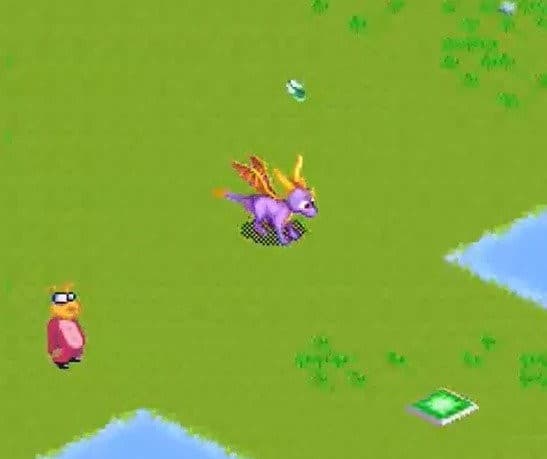
©Screenshot from game – License
As the first mobile-only release in the franchise, Ripto Quest follows the story of Attack of the Rhynocs. Ripto manages to destroy the machine that kept him sealed away in the fabric of space and seeks revenge. The game features eight levels and resembles the gameplay of the Game Boy Advance games. However, the levels feel barren and empty compared to the GBA trilogy.
The game sports new and improved graphics that add a lot of detail to the sprites. Spyro has his iconic gliding, fire-breathing, and jumping abilities that help him along the way to defeating the final boss. The end boss is a giant snake, a new addition to the series. One criticism of the game is that players do not actually encounter Ripto, despite the story and title being about him.
Spyro: Shadow Legacy (2005)
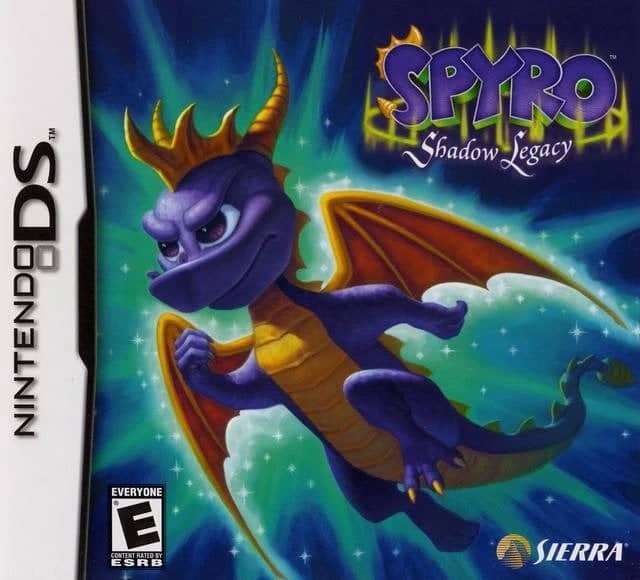
©Nintendo DS game cover – License
Shadow Legacy marks the beginning and the end of the series. It is the first game to be introduced onto the Nintendo DS, released exclusively, and is the last game in the original continuity. While previous titles may have been different, they took place under the same narrative and continuity, with the series receiving a reboot after this title.
After returning home, following the events of A Hero’s Tail, Spyro, along with everyone else, is trapped in the Shadow Realm. Trying to figure out what’s happening, Spyro is given the Shadowstone and trains in dragon-kata, a martial art. He defeats Red, the ancient dragon, during his journey again and discovers that the Scorcerer is behind the Shadow Realm.
Unlike past titles, Shadow Legacy is a role-playing game focusing more on stories and puzzles rather than collecting items. Being exclusive to the DS means that players utilize functions like the touchpad to cast spells. Drawing certain spells adds to more engaging gameplay mechanics. However, its release was surrounded by mixed and average reviews, with some ratings as low as 1 star.
The Legend of Spyro: A New Beginning (2006)
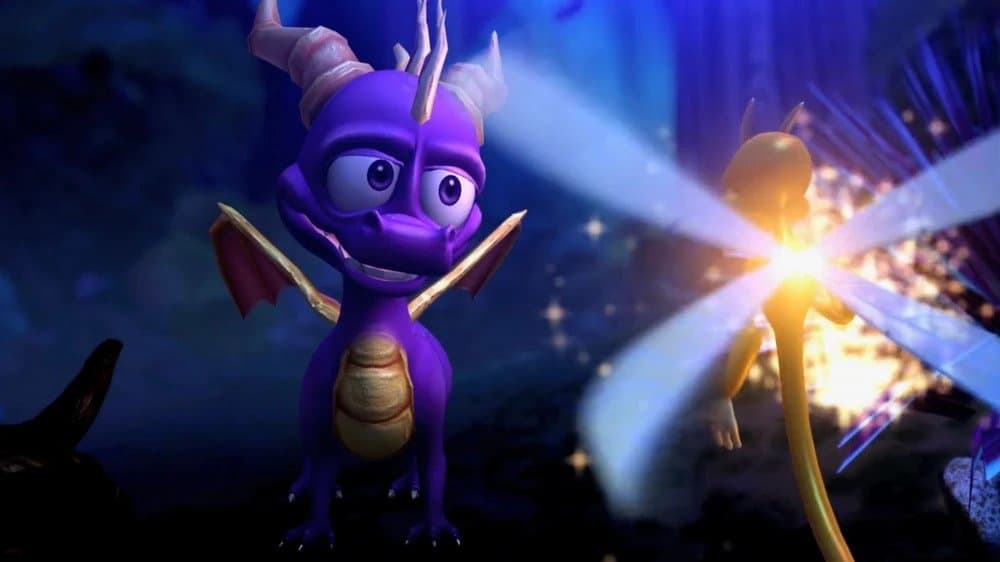
©Gameplay screenshot – License
A New Beginning was a franchise reboot, changing the lore, story, and genre but keeping the same characters. As the first game of the new trilogy, it set the formula for new games to follow, which was more combat-centric.
The story starts with the Year of the Dragon, taking place every twelve years, with a large dragon named Ignitus watching over an egg. It is prophesied that a dragon will be born every ten generations, deciding the realm’s fate. After an attack from the Dark Master, Ignitus saves one egg, which later hatches to Spyro.
The game focuses more on action and combat than previous titles. While some collecting and puzzles still exists, players use combos to take down their enemies. As part of an effort to help the reboot, the developers hired professional actors to voice the characters. Notable names such as Gary Oldman, David Spade, Cree Summer, and Elijah Wood as Spyro were all featured.
Its reviews are mixed, with some criticizing the new trilogy’s direction. Others found it to be an enjoyable experience, not like the original, but something entirely its own.
The Legend of Spyro: The Eternal Night (2007)
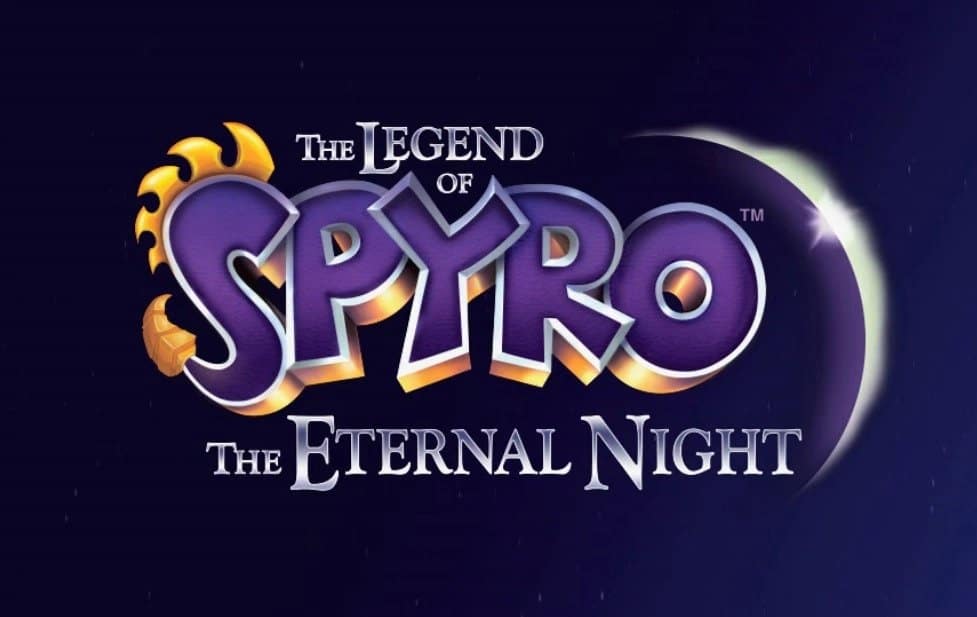
©Fandom – License
Following the events of A New Beginning, The Eternal Night features Gaul, the Ape King who seeks to bring the Dark Master back to life. After being attacked by a horde of apes, Ignitus spends Spyro on a quest to find a tree he has visions about. This leads Spyro on a series of missions and predicaments, such as getting captured by pirates. He is made to fight and recognize Cynder, who previously left at the beginning of the game and was captured by the same crew.
A new added mechanic is Dragon Time, which allowed Spyro to slow down time. This can be used for platforming difficult areas or defeating enemies. However, most gameplay elements played similarly to the original.
The game features the voice work of Gary Oldman and Elijah Wood again but replaces David Spade and Cree Summer. Billy West takes on the role of Sparx, while Mae Whitman voices Cynder. Like its predecessor, the game is much darker in its themes and gameplay than the original trilogy. Players battle their way through linear levels again to defeat enemies and bosses. It received mixed reviews at release, with some rating it lower than A New Beginning.
The Legend of Spyro: Dawn of the Dragon (2008)
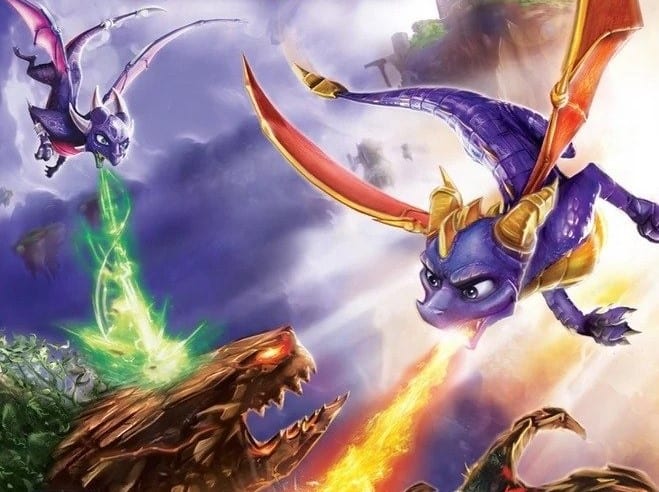
©Fandom – License
Finishing out The Legend of Spyro trilogy, Dawn of the Dragons features the franchise’s first free-fly mode. Players can fly anytime throughout the game and swap between Sypro and Cynder. The game also features a co-op option, allowing the campaign to be completed with a friend.
Cynder can control poison, fear, wind, and shadows, in contrast to Spyro’s elements. Billy West and Mae Whitman were replaced as Sparx and Cynder, with Wayne Brady and Christina Ricci taking on the roles.
The story takes place three years after The Eternal Night, with Malefor, the Dark Master, returning to the realm, spreading darkness with him. Players will travel through different lands and islands, defeating the waves of Malefor’s army. The game ends with Spyro and friends confronting Malefor and engaging in an air battle. Players must use everything they’ve learned to defeat the Dark Master for good.
While it received average reviews at release, fans of the series have noted that Dawn of the Dragons is the best out of the Legend of Spyro trilogy. The co-op gameplay and flying allow for new possibilities and are fun mechanics.
Spyro Reignited Trilogy (2018)
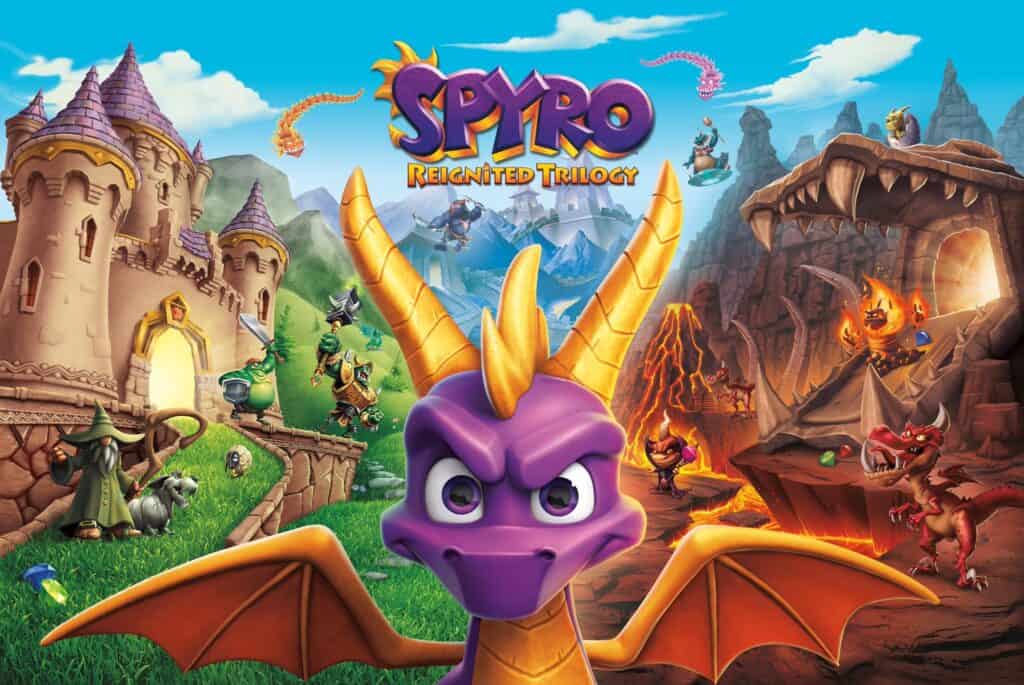
©IGDB – License
While the franchise has not received a new game in over 14 years, Spyro Reignited Trilogy allows new players to experience the original trilogy. The remaster stays faithful to the original games, keeping the maps and layouts the same.
Some references and characters were changed to reflect updated viewpoints, as the first game came out at a different time. However, it features new graphics, textures, and some mechanics to keep the gameplay fresh and exciting.
Its release was surrounded by positive reviews, with critics praising the updated graphics and beautiful visuals. While there were issues with its loading times, bugs, and the framerate, patches were released to fix the issues. It was also nominated for multiple industry awards. Unfortunately, it has not led to a new Spyro game being developed, although some rumors speculate Activision could be preparing for one.
